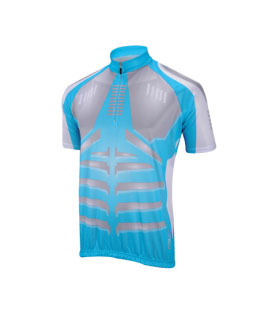
- Afrikaans
- Albanian
- Amharic
- Arabic
- Armenian
- Azerbaijani
- Basque
- Belarusian
- Bengali
- Bosnian
- Bulgarian
- Catalan
- Cebuano
- Corsican
- Croatian
- Czech
- Danish
- Dutch
- English
- Esperanto
- Estonian
- Finnish
- French
- Frisian
- Galician
- Georgian
- German
- Greek
- Gujarati
- Haitian Creole
- hausa
- hawaiian
- Hebrew
- Hindi
- Miao
- Hungarian
- Icelandic
- igbo
- Indonesian
- irish
- Italian
- Japanese
- Javanese
- Kannada
- kazakh
- Khmer
- Rwandese
- Korean
- Kurdish
- Kyrgyz
- Lao
- Latin
- Latvian
- Lithuanian
- Luxembourgish
- Macedonian
- Malgashi
- Malay
- Malayalam
- Maltese
- Maori
- Marathi
- Mongolian
- Myanmar
- Nepali
- Norwegian
- Norwegian
- Occitan
- Pashto
- Persian
- Polish
- Portuguese
- Punjabi
- Romanian
- Russian
- Samoan
- Scottish Gaelic
- Serbian
- Sesotho
- Shona
- Sindhi
- Sinhala
- Slovak
- Slovenian
- Somali
- Spanish
- Sundanese
- Swahili
- Swedish
- Tagalog
- Tajik
- Tamil
- Tatar
- Telugu
- Thai
- Turkish
- Turkmen
- Ukrainian
- Urdu
- Uighur
- Uzbek
- Vietnamese
- Welsh
- Bantu
- Yiddish
- Yoruba
- Zulu
Dec . 21, 2024 06:38 Back to list
how to install a mountain bike rear derailleur
How to Install a Mountain Bike Rear Derailleur
Installing a rear derailleur on a mountain bike can significantly enhance its performance and improve your shifting experience. Whether you're replacing an old derailleur or upgrading to a better model, the process can be straightforward with the right tools and approach. In this article, we’ll guide you through the necessary steps to successfully install a rear derailleur on your mountain bike.
Tools You Will Need
Before starting the installation, gather the following tools
1. New Rear Derailleur Ensure it's compatible with your bike's drivetrain. 2. Screwdrivers A Phillips and flathead screwdriver will be useful. 3. Allen Wrenches Typically 5mm and 3mm sizes for screws and bolts. 4. Chain Tool If you need to adjust the chain length. 5. Torque Wrench Optional but recommended for proper tightening of screws. 6. Bicycle Stand If possible, use a stand to elevate the bike for easier access.
Step-by-Step Installation Process
1. Prepare the Bike Start by ensuring your bike is clean and on a stable surface or a bike stand. Shift the bike into the smallest rear cog to release tension from the derailleur, making it easier to work.
2. Remove the Old Derailleur If you're replacing an old derailleur, use the appropriate Allen wrench to remove it. Loosen the mounting bolt and pull the derailleur off from its hanger. Carefully detach the chain from the derailleur if necessary.
3. Inspect the Chain Examine the current chain for wear and determine if it needs replacement. A worn-out chain can affect shifting performance and damage your new derailleur.
how to install a mountain bike rear derailleur

4. Install the New Derailleur Align the new derailleur with the derailleur hanger and insert the mounting bolt. Before tightening, ensure that the derailleur is positioned correctly so that the jockey wheels align with the cassette.
5. Tighten the Mounting Bolt Using your Allen wrench, tighten the mounting bolt securely. If you have a torque wrench, refer to the derailleur manufacturer’s specifications for the correct torque setting to prevent over-tightening.
6. Attach the Chain If you removed the chain, reattach it. Ensure the chain runs smoothly through the derailleur and onto the jockey wheels. If your chain needs adjusting, use the chain tool to add or remove links as necessary.
7. Adjust the Limit Screws Most derailleurs have two limit screws one for the high gear (smallest cog) and one for the low gear (largest cog). Adjust these screws to set the maximum range of the derailleur. Start by shifting to the smallest cog and adjust the high limit screw until the derailleur is correctly aligned without throwing the chain off.
8. Set the B-Screw The B-screw adjusts the distance between the derailleur and the cassette. Set it so that there’s about a 5-6mm gap between the top jockey wheel and the largest cog when in the lowest gear. This ensures smooth shifting without dragging.
9. Test the Shifts Shift through all the gears, ensuring the derailleur moves smoothly between cogs and the chain doesn’t drop off. If it struggles to shift, minor adjustments to the limit screws or indexing may be necessary.
10. Final Check Once you're satisfied with the shifting, double-check all screws for tightness and ensure the chain is running smoothly. Take the bike for a short test ride to confirm everything is functioning as it should.
Conclusion
Installing a rear derailleur on your mountain bike is a rewarding DIY project that can improve your ride's performance. With the right tools and careful attention to detail, you can achieve smooth and reliable shifting. Remember, when in doubt, consult the specific manufacturer’s instructions or seek the help of a professional bike mechanic. Happy riding!
-
The Ultimate Kids' Four-Wheeler Experience
NewsJul.09,2025
-
The Ultimate Guide to Mountain Bikes: Gear Up for Your Ride
NewsJul.09,2025
-
The New Age of Cycling: Electric Bikes for Every Rider
NewsJul.09,2025
-
The Best Kids Bicycles: Ride in Style and Safety
NewsJul.09,2025
-
The Best 3-Wheel Scooters for Kids: Fun, Safety, and Adventure
NewsJul.09,2025
-
Revolutionize Your Ride: Affordable Electric Bikes
NewsJul.09,2025
-
Finding the Perfect Mountain Bike for Every Rider
NewsJul.09,2025



